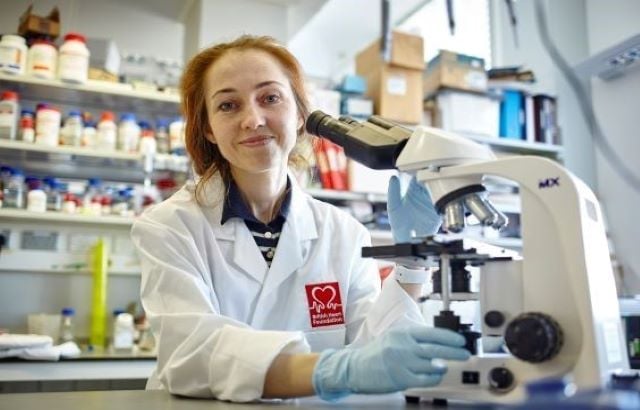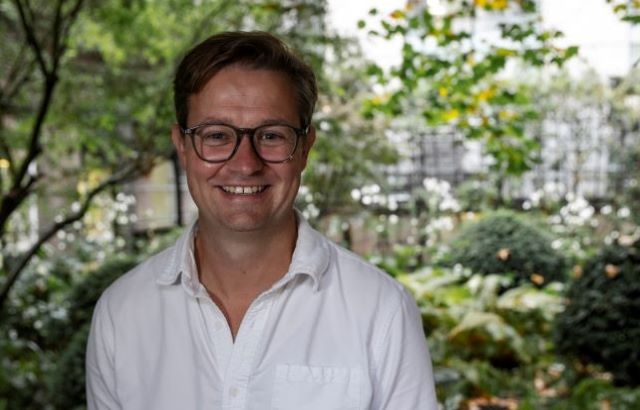

We rounded up 2021 with a special Live & Ticking event looking back on some of the year’s biggest breakthroughs that we’ve funded. We invited the talented scientists behind the research to talk about their ground-breaking discoveries.

The people behind the research
Our first speaker, Professor Svetlana Reilly, is an Associate Medical Professor of Cardiovascular Science at the University of Oxford. She’s had a long-standing interest in understanding two often linked heart conditions – atrial fibrillation (AF) and cardiac fibrosis (CF).
“In a normal heart, electrical activity is steady and regular, causing organised contraction. In atrial fibrillation, these electrical impulses are totally different – they fire in a disorganised and chaotic way, causing the heart to quiver or twitch,” Professor Reilly explains.
If left untreated, the condition can progress and lead to serious complications. One quarter of all strokes are due to AF, and the condition can also lead to heart failure, heart attack, sudden cardiac arrest, and dementia.
“AF is a major clinical problem, affecting over 33 million people globally. What’s even more alarming is that mortality associated with AF has continued to rise in recent decades. We need to find an effective treatment for this growing disease.”
Cardiac fibrosis – scarring of the heart – is a major factor that promotes AF. To understand the mechanisms of CF, Professor Reilly and her team investigated a hormone called calcitonin, which regulates calcium levels in the blood. Calcitonin is known to be produced by the thyroid gland, however, children born without a thyroid gland still produce high levels of calcitonin.
“We hypothesised that calcitonin can be produced by the heart and, indeed, found that heart cells produced sixteen times more calcitonin than thyroid cells,” explains Professor Reilly. “This was a new and important discovery, as when we looked at the calcitonin levels produced by patients with AF, we found that their hearts produced six times less calcitonin than the control patients.”
These exciting findings were supported by a subsequent study which explored how the hearts of mice were affected by varying levels of calcitonin. It showed that when calcitonin in the atria was reduced, fibrosis increased. Furthermore, when calcitonin levels were restored, fibrosis was completely abolished and not a single mouse developed AF.
So, could calcitonin be a cure for AF? Possibly. This is what Professor Reilly and her team are continuing to investigate.

Our second speaker, Dr Richard Issitt, is a Senior Paediatric Perfusionist at Great Ormond Street Hospital and the only perfusionist to hold a BHF Post-Doctoral Clinical Research Fellowship. In cardiac surgery, a perfusionist allows the blood to pass through a machine to keep the patient alive whilst the surgeons repair the heart.
Over the last 20 years, doctors have increased the number of organs available to children needing a heart transplant by using donor ‘ABO-incompatible’ hearts, where the donated heart doesn’t have the same blood type as the child receiving the transplant.
“We did this by essentially removing all of the child’s blood and throwing it away. The idea of this is very simple. You’re just getting rid of all the antibodies in the blood and replacing them with donated blood and blood products that don’t have antibodies in them. This way, the body wouldn’t reject the heart,” says Dr Issitt.
Though successful, this method required a huge amount of blood and therefore posed a physical limit to how big the child could be in order to have this type of procedure – capped at around four years old.
“So, we developed a technique using something called an immunoadsorption column which allows us to split the blood and the plasma containing all the antibodies. From this, we can take out the antibodies that cause rejection, recombine it with the rest of the blood, and pump it back into the patient.”
Funded by the BHF, Dr Issitt and his team have been developing this technique for the past 5 years. Now, as this procedure does not require the child’s blood to be completely removed and replaced, children up to the age of 8 or 9 are able to have a ‘mismatched’ heart transplant. This technique has doubled the number of children able to receive a heart transplant, and given children like Lucy – who, at the age of 8, was the oldest person worldwide to receive a mismatched heart – another chance at life.
How the research helps real people
“My younger brother collapsed at school and was taken into hospital. That’s when he was diagnosed with HCM. Mum was told to bring the rest of the children in to be checked,” says Thanieth. Thanieth, her two brothers, her mother and auntie were all diagnosed with the condition.
Thanieth lost her mother to the condition, age 42. Then, sadly not long after that, her older brother had a sudden cardiac arrest at the age of 26. After this, Thanieth found courage to speak out publicly about HCM.
“I haven’t always been so open. Growing up, my mum told me not to tell anyone about my heart condition or no one would marry me. But now, after everything that’s happened, I feel it’s important to raise awareness and share what we’ve been through as a family. Maybe my story can comfort other people who are going through similar experiences.”
Watch our Live & Ticking event


